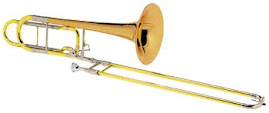
IN 1948 13 veteran brasswind repairmen from Graslitz, Germany, set out to pool their substantial technical knowledge and expertise to create a new line of exceptional musical instruments. A new manufacturer, Miraphone, was born
Miraphone earned important endorsements from some very popular U.S. tubists. Legendary tubists such as Roger Bobo (born 1938,) a noted American tuba virtuoso and teacher. He retired from active tuba performance in 2001 in order to devote his time to conducting and teaching. He gave what is reputed to be the first solo tuba recital in the history of Carnegie Hall. and Winston Morris further augmented the popularity of Miraphone tubas..
To accommodate growing production demands the factory was expanded in 1983. In more recent upgrades, the factory's research and design lab was equipped with high-tech computers that analyze instruments' intonation, sound production, and tonal character, making each of today's German handcrafted instruments.
The company also offers trumpets, fluegelhorns, tenor horns, baritones, trombones, and French horns. Approximately 25 percent of Miraphone's sales are to the United States, 20 percent to Asia, and 55 percent to Europe and elsewhere.
Miraphone's flagship products have long been its rotary valve a valve acting by continuous or partial rotation, as in the four-way cock.
Miraphone began producing its own pistons onsite 22 years ago, and in 2002 it introduced its acclaimed 1291 "Big Babe" front action piston tuba. Outside of the realm of tubas, Miraphone has made recent improvements in the Miraphone 1258 compensating euphonium or tenor tuba.
Under the direction of President Markus Theinert and Vice-President Josef Lindlmair, tuba design specialist Christian Niedermaier develops each new Miraphone instrument design. Over the years Niedermaier has worked with Gene Pokorny is an American tubist. He has played with the Chicago Symphony Orchestra since his appointment by Georg Solti in 1988. He has also played with the Israel Philharmonic, the Utah Symphony, the Saint Louis Symphony Orchestra and the Los Angeles Philharmonic. Oystein Baadsvik, Winston Morris, and Alan Baer have contributed to continually improve instruments and develop new ideas. Markus Theinert, himself a professional tuba player who has played a key role in product design and development since he joined Miraphone 16 years ago, performs the final test on each new innovation before the design is sent to Miraphone's 70-person production staff.




































